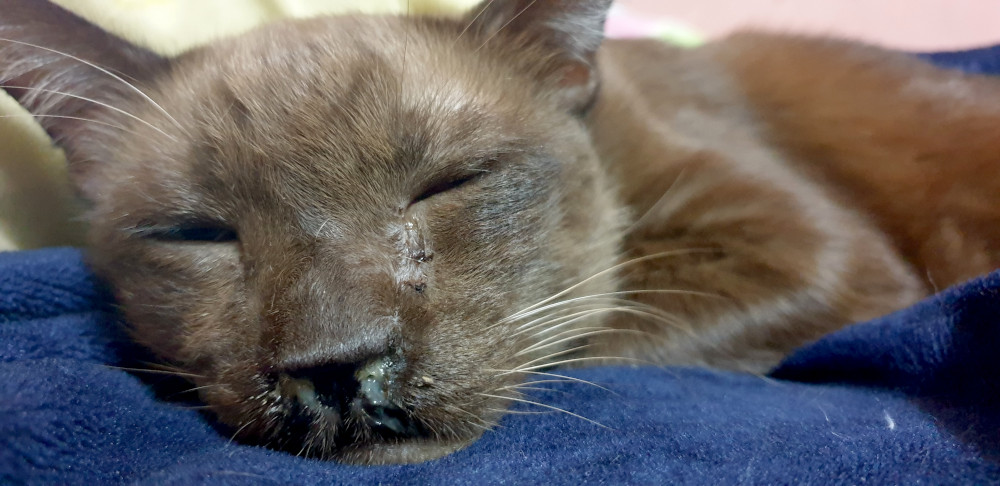
Cat flu is a general term for a highly contagious upper airway disease that affects cats and kittens. This disease is caused by one or more viruses including Feline Herpes Virus 1 (FHV1) and Feline Calicivirus (FCV) in the majority of cases. In some cases, other organisms may be involved, including the bacteria Bordetella bronchiseptica and Chlamydophila felis.
Why is cat flu a problem?
Cat flu can cause severe suffering. If it is not treated, it can cause permanent damage or even death, particularly in very young or old cats and those with weaker immune systems.
How do cats get cat flu?
Cat flu is generally spread by direct contact between cats (e.g., via saliva, tears, discharge from the eyes and/or nose). It can also be spread indirectly (e.g., via contaminated food bowls, bedding, litter trays or human hands). Kittens and older cats are the worst affected due to lower immunity. After recovering from cat flu, many cats will remain life-long carriers of the virus but will show no, or minimal signs of illness. Life-long carriers can spread the virus to other cats as they sometimes ‘shed’ the virus during periods of stress (e.g., in catteries or shelters).
How do I know if my animal has cat flu?
Cat flu produces symptoms similar to the common cold in humans, including:
- Breathing problems
- Coughing
- Discharge from the eyes and/or nose
- Fatigue
- Fever
- Loss of appetite
- Sneezing
- Ulcers of the mouth and/or eyes
How is cat flu prevented and treated?
Vaccination
All kittens and cats should be vaccinated against the viruses that cause cat flu. Vaccination can prevent disease or reduce the severity of symptoms in cats who become ill. Vaccination should start at eight weeks of age, and booster vaccinations should be given as often as recommended by a veterinarian. Kittens need to be kept indoors and away from other cats until they are fully protected. For more information see the Knowledgebase article What vaccinations should my cat receive?
Isolation
To help stop or reduce disease transmission, cats with cat flu must be isolated from other cats until they are fully recovered (usually approximately two weeks but it can take longer). During periods of cat flu (illness and recovery), the food bowls, litter trays and bedding of infected cats must be washed separately to that of other cats in the household.
Veterinary treatment
If you suspect your cat has cat flu, seek prompt veterinary care.
